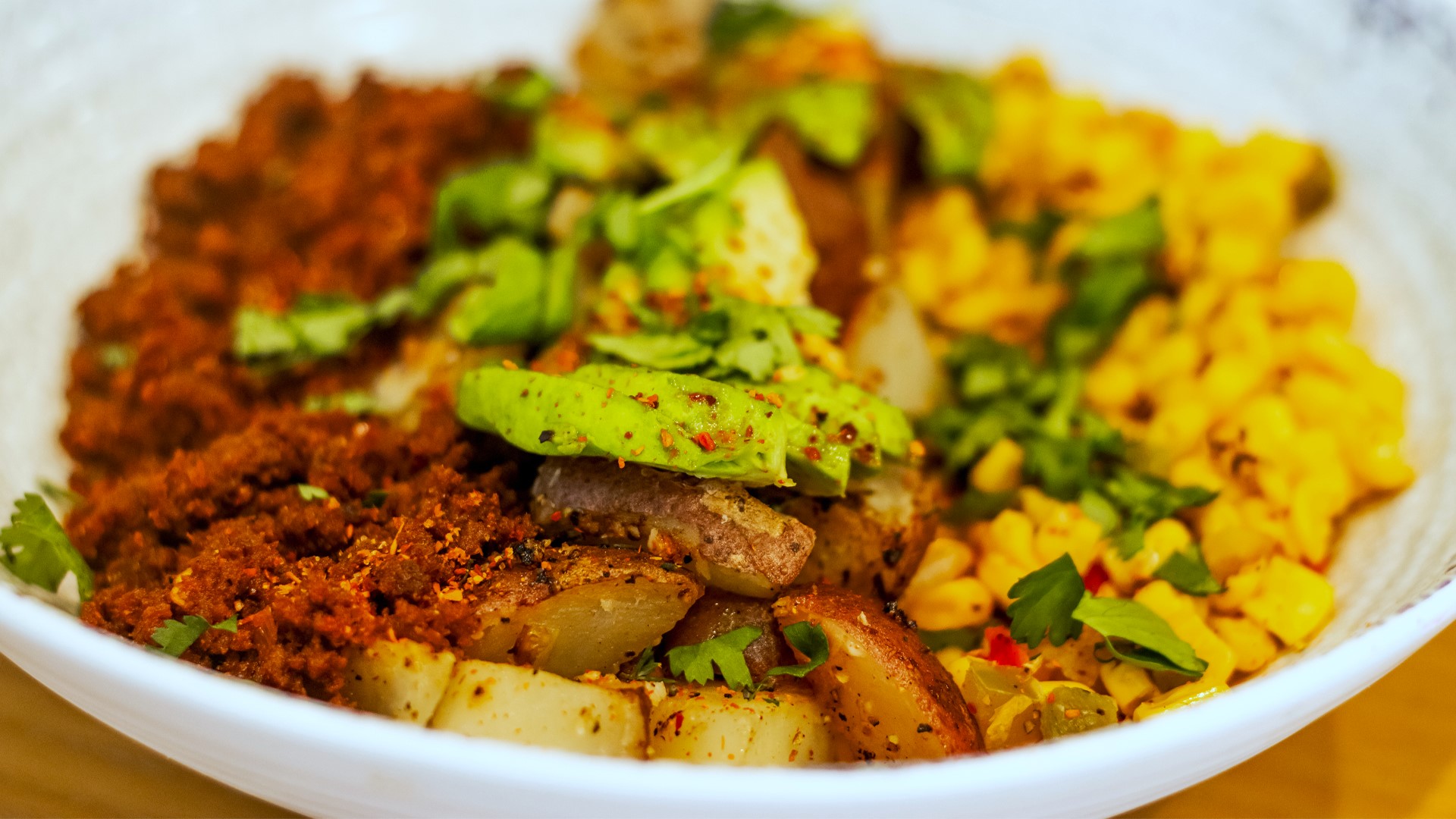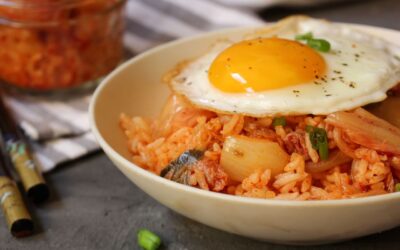Salt is one of the most popular seasonings in the world. For most people, it’s hard to imagine what cooking or dining would be like without it. Salt does some major heavy-lifting to enhance the flavors already present in foods, but we agree with the team at Menus of Change that it’s often overused in culinary applications.
For National Nutrition Month, we’re taking a look at this granulated food enhancer and, in particular, one of its chemical components: sodium. Let’s talk about why we need it, some of the downsides of eating too much of it, and ways we can start reducing the amount of sodium in our diets without compromising on flavor.
Sodium: A Double-edged Sword
Beyond making food taste even more delicious, sodium is necessary for our bodies to function properly, but we only need about 500 mg of sodium each day. The American Heart Association recommends a maximum of 2,300 mg of sodium daily. However, the average American consumes about 1,100 mg more sodium than the recommended maximum.
The short-term impacts of eating too much salt are minor, but when levels stay elevated over time, sodium can build up in our bodies. If sodium levels in the body stay high, people are at greater risk of long-term health consequences like high blood pressure, heart disease, stroke, kidney disease, or kidney stones.
Luckily, the story doesn’t end there, and it’s always possible to make a change. People can significantly reduce their sodium intake by following a few key tips.
Ways to Reduce Sodium Intake
In many cases, reducing how much sodium we consume is easier than people think. Here are just a few ways to limit sodium intake without missing out on flavor.
Get Comfortable Reading Food Labels
While many associate sodium with salty foods, there are many ways that sodium content hides in plain sight. Here are a few ways sodium may be hiding in your favorite foods:
- Sodium bicarbonate (baking soda) — Often found in baked goods like breads, cakes, or cookies.
- Monosodium glutamate (MSG) — A common flavor enhancer used in processed foods.
- Disodium inosinate — Sometimes used with MSG to bring out a deeply umami or savory flavor in packaged foods.
- Sodium hydroxide, sodium benzoate, or calcium disodium EDTA — Used frequently as food preservatives to extend shelf life.
When reading food labels, be on the lookout for other places where sodium hides beyond just “salt” as an ingredient. And remember, just because a label says it’s “lower sodium” doesn’t mean the sodium content is actually “low.”
Trade Frozen for Fresh
Be careful when reaching for quick frozen, prepared meals. These meals often contain high amounts of sodium to enhance flavor and extend shelf life. Health experts recommend prioritizing low-sodium foods—that is, those with under 140 mg of sodium per serving. That’s why they generally recommend avoiding frozen meals when looking to reduce sodium intake.

While the exact content varies, a single frozen meal can easily contain 700+ mg of sodium, which is well over the recommended amount per serving.
Seek Out Low-sodium Alternatives
If you’re looking for low-sodium foods in general, here are some options:
- Brown rice, farro, quinoa, pasta, and whole wheat pasta
- Starchy vegetables like potatoes, sweet potatoes, butternut squash, and parsnips
- Fresh or frozen chicken, turkey, beef, pork, cod, sea bass, tuna, etc.
- Whole eggs and egg whites
- Low-sodium canned or homemade soups
- Milk, yogurt, unsalted butter, and low-sodium cheeses
- Whole-wheat bread, low-sodium tortillas, and unsalted crackers
- Unsalted snack foods like pretzels, popcorn, tortilla chips, nuts, and seeds

Incorporate Flavor Without the Salt
While salt is one way to add flavor to a dish, there are so many options beyond it. By substituting other big profile flavors—garlic, onion, lemon, ginger—you may find that you don’t miss the salt at all.
Before reaching for the salt, experiment and try a few spices. The possibilities are nearly endless! The National Institutes of Health (NIH) offers a whole list of recommendations for those looking to experiment. Here are just a few ideas for you to stew on:
- Cumin — With flavors described as smoky, nutty, and slightly peppery, cumin makes a great addition to root vegetable dishes and enhances the savoriness of fatty meats like beef.
- Garlic — When fresh, garlic borders on spicy with a distinct, pungent flavor. When cooked, the flavor mellows into a softer flavor. Try it in soups, marinades, on salads, or while sautéing vegetables for a fragrant, buttery kick.
- Paprika — Made from ground red pepper, paprika can be found in sweet, smoked, and spicy varieties. Its flavor is mild but can make a deliciously subtle impact on a dish. It’s great in marinades, sauces, atop deviled eggs, or in meat dishes.
- Basil — This spice strikes an interesting balance between sweet and savory, bringing peppery and sweet elements to its dishes. We recommend using it for soups, fish dishes, sauces, and even soups.
Swap It Out
While sodium is a necessary part of our diets, it’s good to limit it for our long-term health. There are plenty of things we can do, like getting more familiar with unexpected sources of sodium. Trade up frozen for fresh, and spice up low-sodium food alternatives with exciting, delicious flavors from other sources.
Remember, it’s okay to start small. Try making one swap—like adding spices like pepper or paprika to a dish while omitting salt, or only eating two freezer meals per week—and increase swaps over time as they become habits. Your future health will thank you!
Interested in more nutrition insights?
Check out our other insights about dietary health and nutrition.


